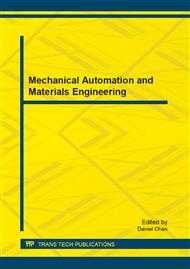p.804
p.809
p.817
p.822
p.828
p.833
p.838
p.843
p.849
Studies on Classification Performance Assessment of a Dry Classifier Based on Analytical Hierarchy Process
Abstract:
The classification performance of a dry classifier depends on cut size, classification accuracy, classification efficiency, classifier process capability, and yield of fine powders, which should meet the required particle-size distribution. Consequently, the classification performance indices limit each other and only a comprehensive assessment of these classification performance indices can evaluate the classification performance truly and synthetically. In the present paper, the Analytic Hierarchy Process is used to calculate the weights of the classification performance indices after determining the hierarchical model. The dimensionless transformation eliminates the effect of the different dimensions. Then, the comprehensive assessed value of the classification performance for each experiment is obtained using the linear weighted method. The maximum value corresponds to the best classification performance among these assessed values. In the present study, a turbo air classifier was used as the classification system and talc powders were used as materials. The best classification performance indices were a cut size of 21 μm, a classification precision index of 0.6, a Newton classification efficiency of 61%, and a yield of fine powders of 57%. The corresponding optimal operational parameter combination consists of a feeding speed of 1.1 kg/min, a wind speed of 8 m/s, and the rotary speed of its rotor cage is 1200 rpm. This assessment method avoids the limitation of evaluating a single classification performance index and the incomplete information derived from single factor experiments. Furthermore, the method also provides quantitative evaluation criteria for the classification performance of a dry classifier. In the proposed method, the classification performance indices can be selected and the comparison matrix can be set flexibly according to production requirements.
Info:
Periodical:
Pages:
828-832
Citation:
Online since:
August 2013
Authors:
Price:
Сopyright:
© 2013 Trans Tech Publications Ltd. All Rights Reserved
Share:
Citation:


